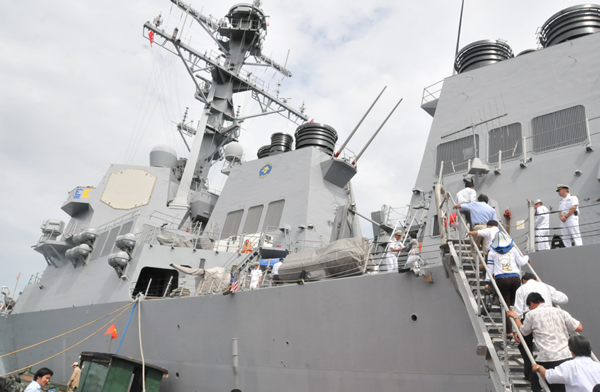This is the grim state of our military’s readiness: An Air Force F-15C that broke in half during flight, two F-18s that have caught fire aboard ships, every single cruiser with cracks in its hull, A-10C Warthogs with fuselage cracks, the UH-1N Twin Huey helicopter fleet that is regularly grounded, and over half the navy’s deployed aircraft not ready for combat.
That is the picture of the U.S. military in disrepair—what The Heritage Foundation’s Mackenzie Eaglen calls a “readiness crisis” among all U.S. military services, including the National Guard and reserves. Readiness is “dangerously lower,” she writes, leading to “delayed, shortened, and less diverse training; plugging personnel and equipment shortfalls in deploying units with resources from others; reduced maintenance for worn-out equipment; and shortened rest time before redeploying overseas.”
How did the military get here? A decade of constant combat and ever-increasing disaster relief and homeland defense missions has contributed to the decline in readiness, and Eaglen writes in AOL Defense that the navy is under particular strain:
While the fleet has shrunk by about 15 percent since 1998, the number of ships deployed overseas has remained constant at about 100. Each ship goes to sea longer and more often, resulting in problems such as the well-publicized shortfalls in surface ship condition. With no surge capacity left in the fleet, each new casualty ripples through the schedules of dozens of ships. With the end of supplemental funding, Navy maintenance funding will be cut by almost 20 percent this year. In this context, a relatively small additional reduction in maintenance funding could render a Navy with 250 to 280 ships capable of keeping only 50 to 60 ships at sea.
Eaglen writes that the issue of the navy’s readiness was raised in a recent House Armed Services Readiness Subcommittee hearing where two admirals told lawmakers that over the past five years and beyond, navy inspections have found that a growing number of the navy’s surface warships aren’t ready to fight.
The troubling news comes as federal spending bumps up against the $14 trillion debt ceiling, Congress is looking for ways to save money, and liberals are looking for ways to keep funding domestic spending. Unfortunately, even the President sees the military budget as an ATM from which he can withdraw cash. Given the military’s readiness and its commitments abroad, cutting defense now is not an option if America is to ensure its defense.
Read more of Mackenzie Eaglen’s analysis of the state of military readiness in her article Pentagon Struggles To Keep Ships Sailing, Planes Flying As Budget Cuts Loom on AOL Defense
